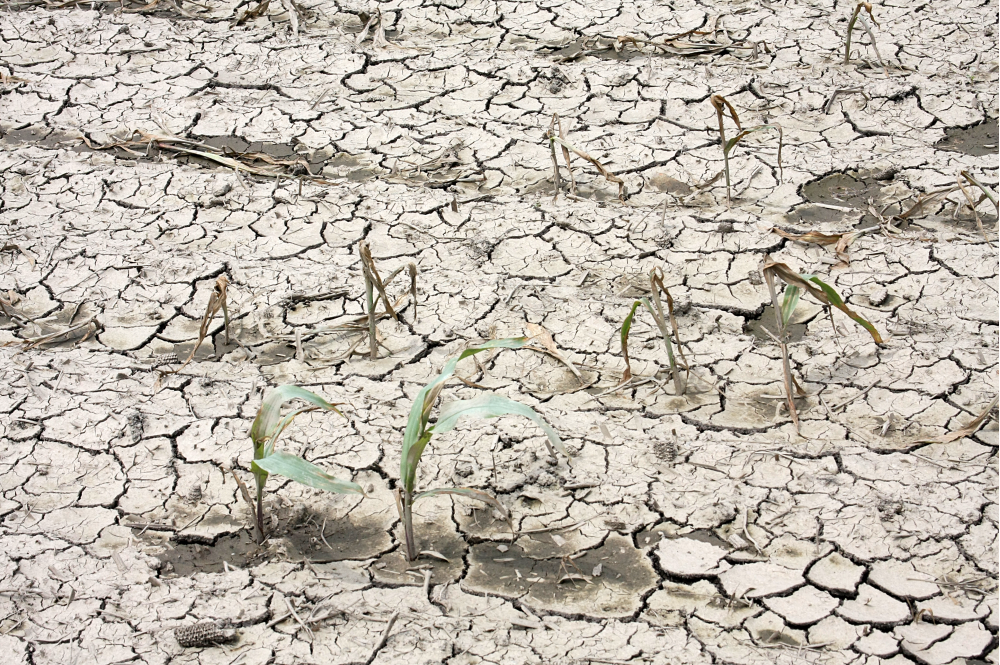
The consequences of flooding, ponding, and saturated soils on young corn depend heavily on the duration of the stress and temperatures.

The consequences of flooding, ponding, and saturated soils on young corn depend heavily on the duration of the stress and temperatures.
To facilitate speedy planting between rain showers many growers are skipping starter fertilizer. What might be the consequences?
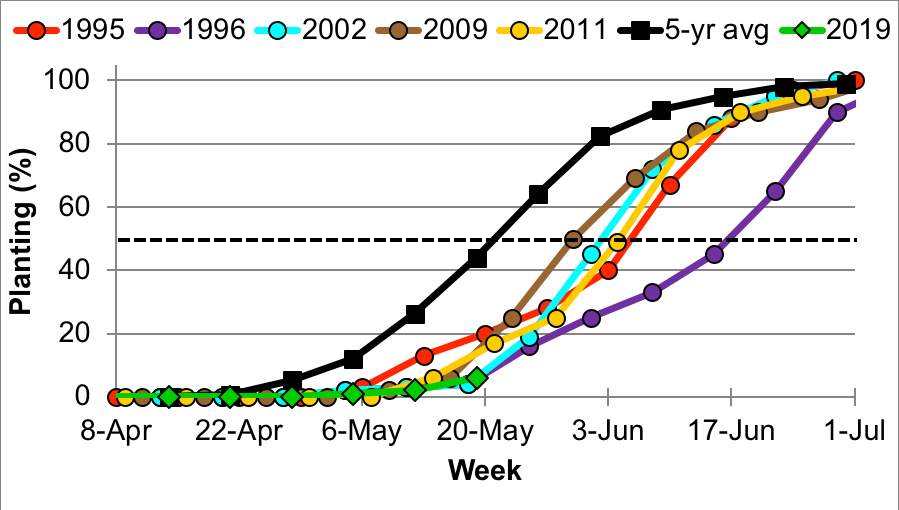
Soybean planting progress (or the lack there of) for Indiana and much of the Midwest is one of the slowest on record. Indiana soybeans normally reach 50% planted by May 20th, but we are only at 6% by the same period.
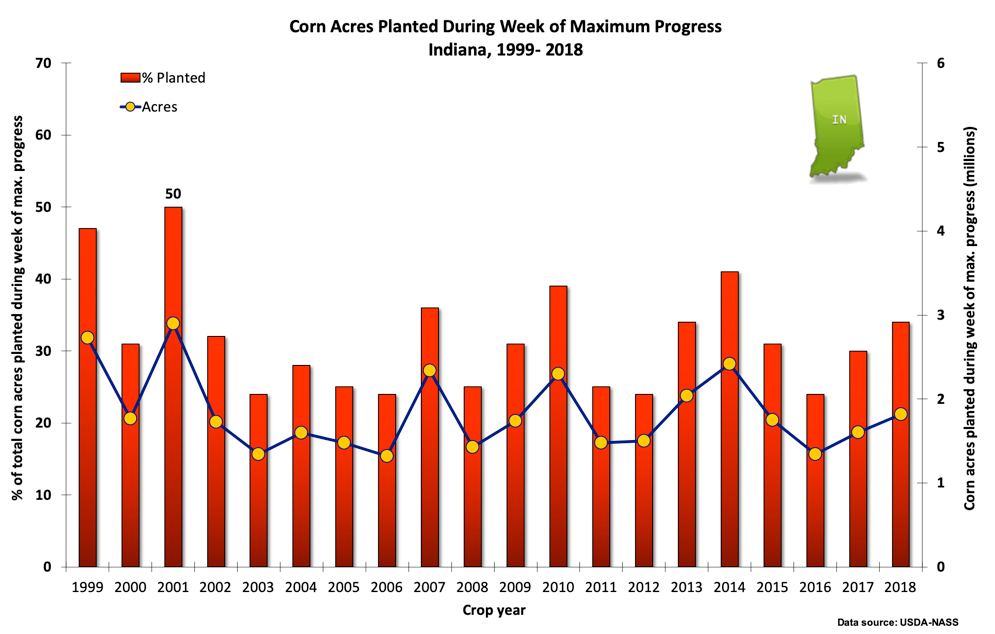
The number of 30-, 40-, and 60-ft wide (or larger) field crop planters across the U.S. Midwest is greater today than, say, twenty years ago. Certainly, individual farmers can plant more acres of corn and soybean per day with today’s large field equipment than they could twenty years ago.
Being able to predict when a field of corn will reach particular leaf stages can be useful for scheduling post-emergence applications of certain herbicides and sidedress N fertilizer, especially if your farming operation is so large that regular field inspections are difficult to work into your busy schedule.
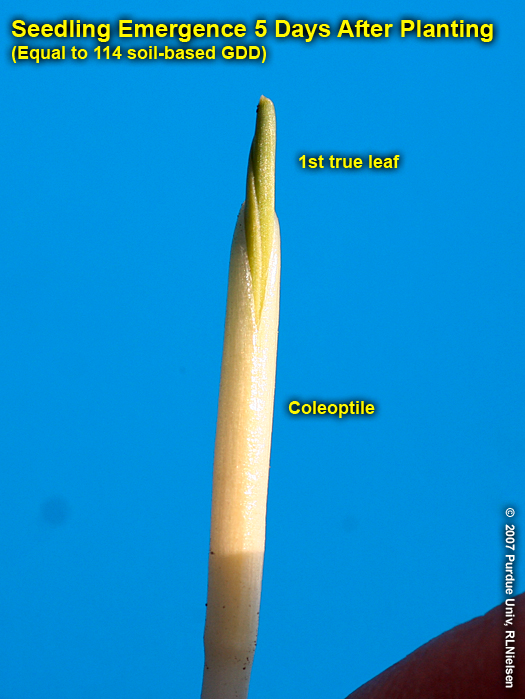
Understanding the sequence of the visual indicators of germination in corn can help troubleshoot emergence problems.
Suitability of the soil moisture and whether a field is “fit” for field work and planting is partially “in the eyes of the beholder”, but is also subject to the “laws of relativity” and calendar date. Use your best judgement.
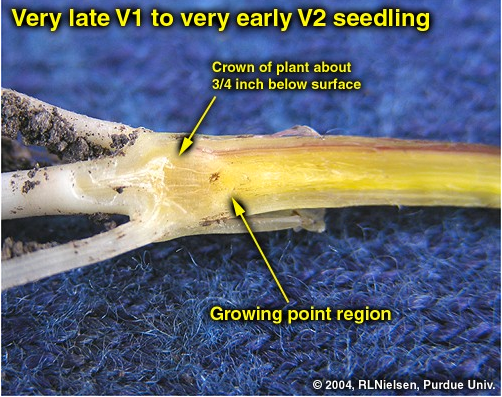
Recovery from early season damage to corn is strongly dependent on the health of the main (apical) growing point region following the damage.
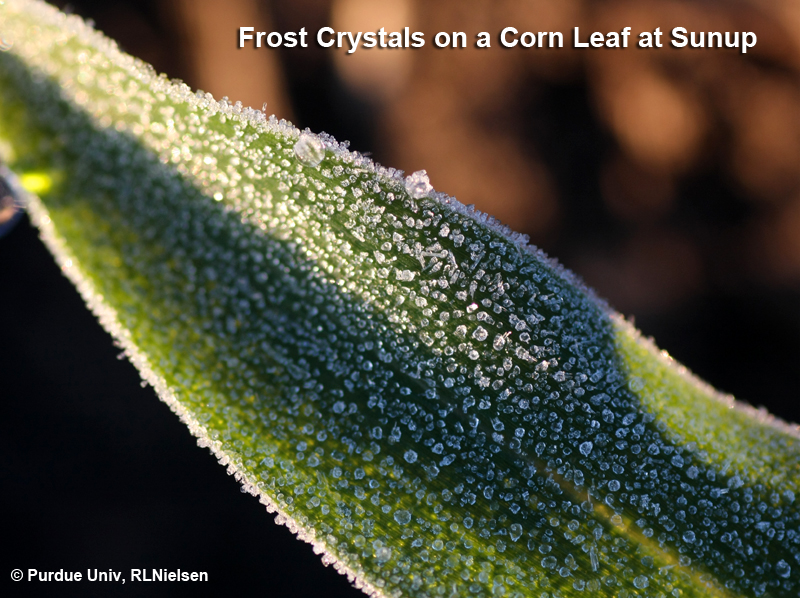
The risk of damaging spring frost events is one of the downsides to planting corn earlier than normal, but is one growers often accept when early spring field conditions are otherwise suitable for planting. However, the threat of low temperatures in late May or early June also raises the specter of frost or low temperature damage to young corn plants, regardless of planting date. Early morning temperatures in the 30so(F) coupled with clear calm conditions overnight certainly are favorable for frost formation on exposed surfaces, including leaves of young corn plants. In other words, temperatures do not need to drop to 32oF or cooler in order for frost to form. When significant frost develops on young corn plants, it is tempting to jump to the logical conclusion that significant plant mortality will soon follow. However, frost by itself is not a guaranteed “kiss of death” for young corn plants. What[Read More…]
Ammonium thiosulfate (ATS) is commonly added to liquid nitrogen (N) solutions to provide sulfur (S) to crop plants. Sulfur response trials have shown ATS to be an effective S fertilizer, however, thiosulfate and its first breakdown product, tetrathionate, are not utilized by plants.
© 2025 Purdue University | An equal access/equal opportunity university | Copyright Complaints | Maintained by Pest&Crop newsletter
If you have trouble accessing this page because of a disability, please contact Pest&Crop newsletter at luck@purdue.edu.